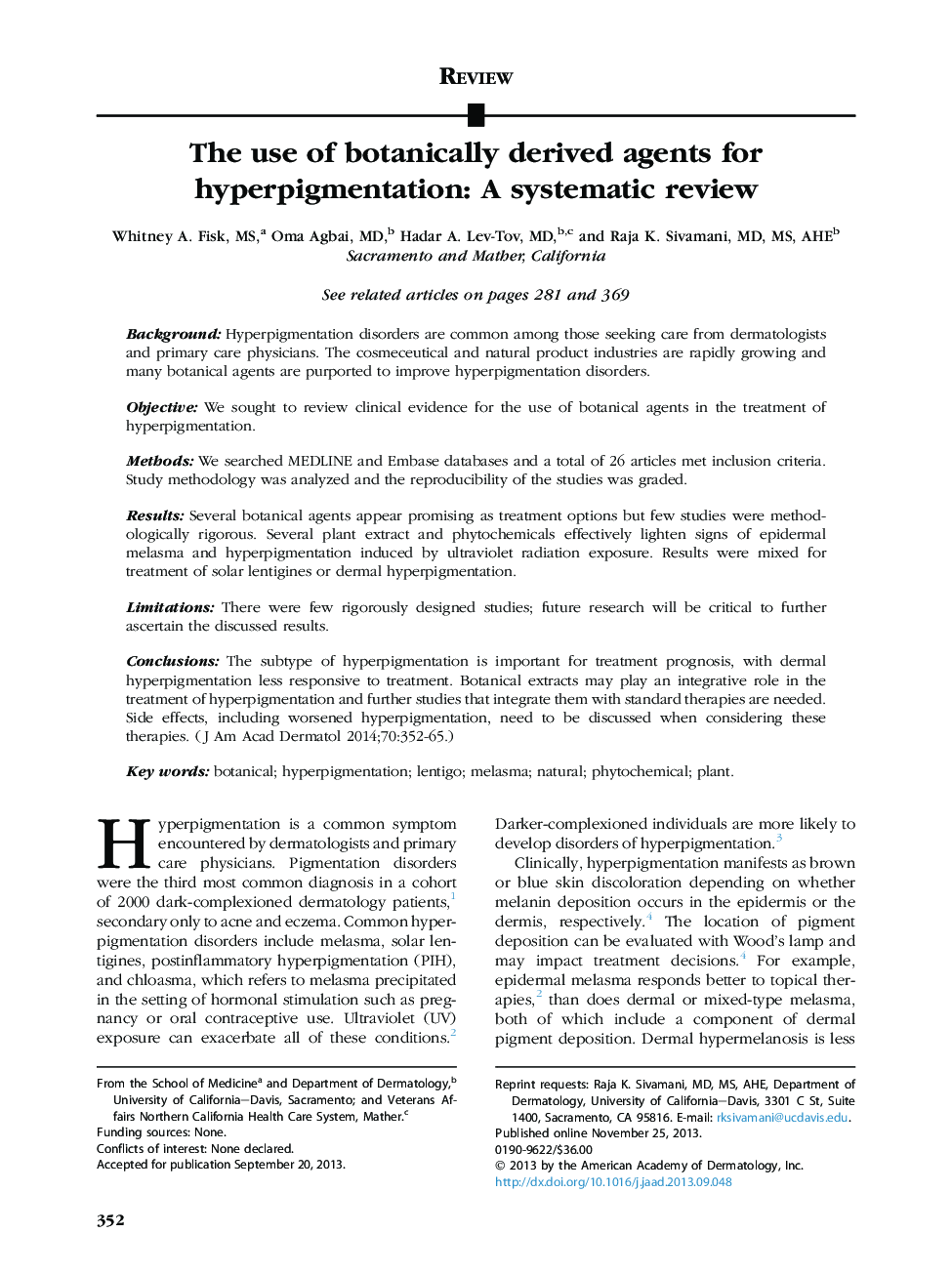| کد مقاله | کد نشریه | سال انتشار | مقاله انگلیسی | نسخه تمام متن |
|---|---|---|---|---|
| 6073349 | 1587541 | 2014 | 14 صفحه PDF | دانلود رایگان |
BackgroundHyperpigmentation disorders are common among those seeking care from dermatologists and primary care physicians. The cosmeceutical and natural product industries are rapidly growing and many botanical agents are purported to improve hyperpigmentation disorders.ObjectiveWe sought to review clinical evidence for the use of botanical agents in the treatment of hyperpigmentation.MethodsWe searched MEDLINE and Embase databases and a total of 26 articles met inclusion criteria. Study methodology was analyzed and the reproducibility of the studies was graded.ResultsSeveral botanical agents appear promising as treatment options but few studies were methodologically rigorous. Several plant extract and phytochemicals effectively lighten signs of epidermal melasma and hyperpigmentation induced by ultraviolet radiation exposure. Results were mixed for treatment of solar lentigines or dermal hyperpigmentation.LimitationsThere were few rigorously designed studies; future research will be critical to further ascertain the discussed results.ConclusionsThe subtype of hyperpigmentation is important for treatment prognosis, with dermal hyperpigmentation less responsive to treatment. Botanical extracts may play an integrative role in the treatment of hyperpigmentation and further studies that integrate them with standard therapies are needed. Side effects, including worsened hyperpigmentation, need to be discussed when considering these therapies.
Journal: Journal of the American Academy of Dermatology - Volume 70, Issue 2, February 2014, Pages 352-365
